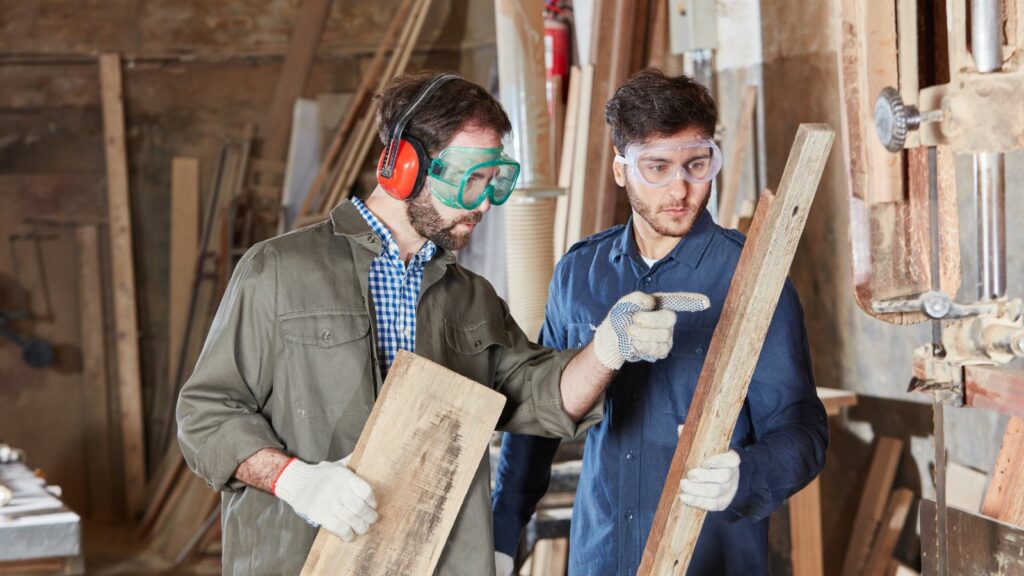Diving headfirst into the world of carpentry tips for beginners can feel like a daunting task for. Fear not, this article is here to guide you through the initial hurdles, making your journey smoother. Whether you’re looking to craft a simple birdhouse or aspire to build furniture, these carpentry tips will have you handling tools like a pro in no time.
Carpentry Tips for Beginners

Whether you’re looking to craft a simple birdhouse or aspire to build furniture, these carpentry tips will have you handling tools like a pro in no time.
Just as tools are critical to the craft, so too is the lingo. Carpentry tips for beginners comes with its own lexicon, terms like “miter,” “mortise,” “tenon,” and “kerf,” the understanding of which enhances communication among carpenters and augments precision in work. For instance, a “miter” refers to a joint made by beveling two parts to meet at an angle, often used in creating picture frames or door frames.
Nailing the Use of Hand Tools
Honing skills with a hammer takes practice. It’s not just about wielding and striking; it encompasses grip, swing rhythm, and accuracy. A proper grip involves the handle resting in the middle of the hand, fingers wrapped securely around, ensuring control and stability. Balancing the weight of the hammer and finding the most effective grip strength prevents muscle strain and enhances precision when striking.

Swift, confident swings, not forceful hits, drive nails in steadily without bending or slanting them. A straight arm and a wrist snap at the end of the swing help maintain an efficient rhythm.
Chisels and planes cut and shape wood, tasks requiring calculated strokes and careful attention to detail. A firm, steady grip on the chisel’s handle reduces chances of slippage, while aligning the edge perpendicularly to the grain allows smooth, controlled cuts.
Hand protection is critical when using chisels. Use a mallet for driving the chisel, ensuring a safer execution than using a hammer.
Enhancing Your Carpentry Skills
Understanding Wood Grain and its Impact
In carpentry, being aware of the wood grain, the pattern formed by the longitudinal arrangement of wood fibers or vessels in trees, is essential. It has a direct effect on aesthetics and the strength of the finished piece. Reading the grain direction is pivotal as incorrect planing against the grain may lead to tearing or splitting the wood.
For instance, when planning or chiseling, you’re better off working with the grain. This means, you start your work from where the grain lines are closest and move towards where they’re the furthest apart.
Tips for Creating Strong Joints

Creating strong joints is a fundamental competency in carpentry. Strong joints ensure the longevity and durability of the created piece, whether it’s a simple box or an intricate piece of furniture.
One such joint is the mortise and tenon joint, a common yet effective method. The tenon, the protruding piece of wood, fits into the mortise, the hole or slot. Using wood glue to bind these pieces together creates a strong joint.
For enhanced strength, dovetail joints are recommended. They consist of a series of pins and tails in a trapezoidal shape that interlock perfectly. This shape results in a joint such that the stronger the pull apart, the tighter the joint becomes. Typically, dovetail joints are used in drawer construction because of their resistance to being pulled apart.
Crafting Furniture
Carpentry’s a craft that’s both rewarding and challenging. Carpentry tips for beginners, it’s crucial to grasp the fundamentals, understand the language, and respect the tools of the trade. The journey might start with a hammer and a handsaw, but with patience and practice, you’ll soon be crafting complex furniture or intricate birdhouses.

